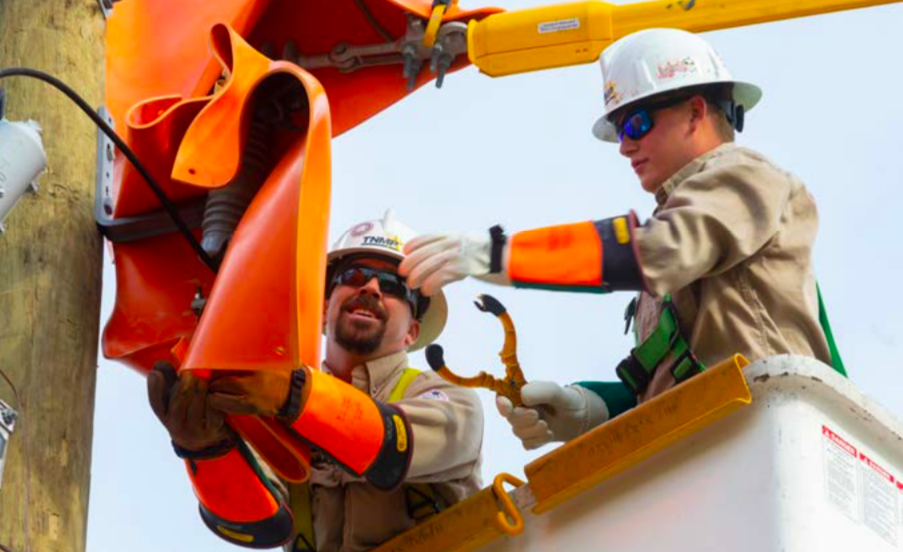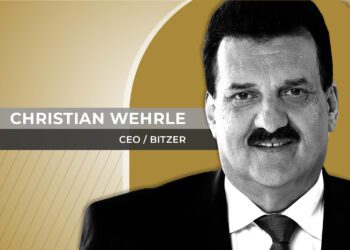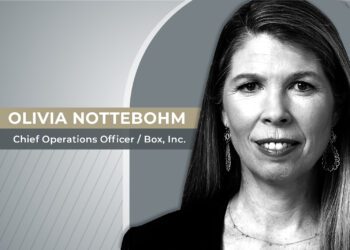Pat Vincent-Collawn, CEO of PNM Resources, is looking to deliver more than simply electricity to its customers.
As Chairman, President, and CEO of PNM Resources, Pat Vincent-Collawn served as the first female chair of the Edison Electric Institute. During her time there, she had two focus areas: diversity and inclusion, and working on partnerships for the development of smart cities. Vincent-Collawn believes that those experiences helped her greatly in understanding that the role of an energy company is not only to provide the services in question, but make customers’ lives better and their towns and cities safer and more liveable.
Indeed, when Vincent-Collawn took on her current role, she did so with the goal of refocusing the company on its core mission of serving customers with electricity that was reliable, affordable, and environmentally friendly, as well as moving away from diversification.
“We had been in some unregulated businesses, which didn’t make sense for our shareholders, so we were able to successfully get out of those and focus back on our core mission,” Vincent-Collawn told CEO Magazine in an exclusive interview. “The second piece of our strategy was to change our generation portfolio and move toward our goal of 100% emissions free electricity by 2040.”
PNM Resources is an energy holding company based in New Mexico. Through its regulated utilities, PNM and TNMP, the company boasts approximately 2,700 megawatts of generation capacity and serves electricity to more than 789,000 homes and businesses in New Mexico and parts of West Texas. In 2019, PNM Resources boasted total revenues of $1.5 billion.
Full of possibilites
The current mood at PNM Resources is one of great positivity. Vincent-Collawn highlighted the goal of earnings and dividend growth of between 5-6% through 2023, much of which she says will come through new investments, notably in renewable energy. And she sees PNM Resources’ service territory of West Texas and New Mexico as full of possibilities to help the company realize its vision.
“We operate in very different parts of Texas insofar as opportunities, such as around Dallas, which is undergoing substantial corporate and residential growth right now; the oil and gas producing region of West Texas, and also in the Gulf coast region, which is currently seeing a boom in the construction of petrochemical refineries,” Vincent-Collawn explained, adding that the company’s homebase of New Mexico currently boasts the third highest solar potential and the third highest onshore wind potential in the US.
“We have a very supportive governor (Democrat, Michelle Lujan Grisham) who has put forth some very innovative legislation that will help us move more rapidly toward emissions free,” she elaborated. “As part of this legislation, we’re shutting down our coal plants and looking to the future. And that’s what our customers are increasingly looking for as well. They want carbon free electricity.”
“One of the things that’s difficult when you’re a monopoly in a service territory like ours is that cities come to you and want things, but they want your customers to pay for it,” Vincent-Collawn emphasized on the business philosophy at PNM Resources. “And we’ve done a very good job of making sure we’re meeting the needs of local government, but not at the expense of other customers by having them subsidize it.”
Working with suppliers
Vincent-Collawn highlighted several ways in which PNM Resources has improved its operating procedures in recent years, pointing to operational excellence principles that she believes, to be truly successful, must not only apply to the company itself, but also play a role in the way it selects its business partners and suppliers.
“We gauge operational excellence through benchmarking with our industry peers and other corporations to look at areas like customer trust and the quality of our service,” Vincent-Collwan explained. “We also have an integrated supplier agreement for our transmission and distribution operations. It’s pretty unique for our industry because these integrated suppliers are basically a working extension of our supply chain.”
“I think the difference between the model we use and other models you see in the industry is that our vendor provides a multitude of services that normally would be done by supply chain or operations,” she elaborated. “For example, they fully staff one of our warehouses. They do material lay down and yard management. So, we can get a high level of projects and spend by shifting a lot of time consuming work that our folks used to do like receiving, logistics, without having to let folks go.”
By way of example, Vincent-Collawn highlighted the relationship PNM Resources enjoys with electrical supplies and services distributor Irby. “Now that Irby’s responsible for making sure we have everything we need, we see higher quality service, greater customer satisfaction, and just as importantly, greater employee satisfaction because employees are doing higher value work,” she said. “The other thing we’re working on in terms of supply chain is security. We’re obviously an industry that has to worry about cyber security and one of the things we have to work on is mitigating that risk in our supply chain. But we’re also working with all our suppliers so that they integrate cyber security themselves, which in turn, presents them with further opportunities. We have a compliance standard in our industry called Critical Infrastructure Protection 13, and if our suppliers can meet that standard, that’s going to help them get business going forward.”
A clean energy future
While many energy companies are embarking on clean energy strategies to keep pace with environmental regulations, Vincent-Collwan was quick to point out that even before she was appointed to her current role, PNM Resources was already making considerable strides in this regard, supporting initiatives and legislation such as the US Climate Action Partnership (USCAP), a cooperative of businesses and leading environmental organizations launched in 2007, and the American Clean Energy and Security Act of 2009—also known as Waxman-Markey, or by the acronym ACES.
“I’ll give you an example of our commitment,” she said. “When we worked with the Environmental Protection Agency (EPA) and they wanted us to put some really expensive pollution control equipment on our power plant, it would have doubled the value of that plant, which would have been expensive for customers. It would have been good for shareholders because they would have received their return on equity. But we worked with the EPA and the state of New Mexico and we said ‘Look, this isn’t the right thing for customers or the environment because it won’t do anything about greenhouse gases. So we came up with a plan to shut down two of our coal units and put less expensive pollution control technology on the other two units. You might think your shareholders would be unhappy with that because you’re reducing the amount of money invested, but on the contrary, they applauded it because they thought it was the right long-term decision. Also, when the governor wanted to work on climate change, we helped advocate for legislation that gets us out of our coal plants and allows us to invest in renewables and non-emitting generation. Sometimes, utilities have to be dragged to the table but we said no, we’ll do this.”
“Instead of being dragged along, we’re leading the charge,” Vincent-Collawn added. “I think the message is you can have a utility that gets on top of this issue and still does well for its customers and shareholders. The question is whether you’re going to ride the wave or simply crash into it? I think we’re navigating that challenge really well.”














